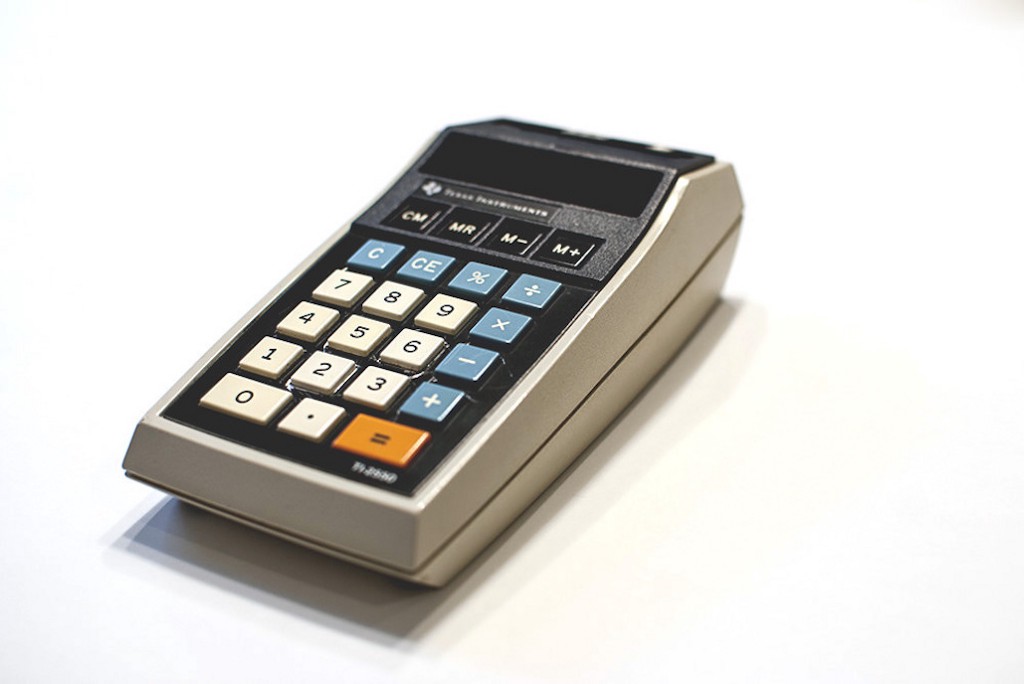Would Putting “Savings” In My Checking Account Solve My Cash Flow Problem?
Let’s do some math.

So on my first two passes through The Value of Debt in Building Wealth, I kinda ignored the part where author Thomas J. Anderson suggests that we keep part of our saved money in our checking account, because… he said we could ignore it.
I think it is important to separate the [saved] money and use your checking account for expenses and a savings account for emergencies. I find it helpful to separate the two, but if you disagree you can look at those two steps as interconnected goals and focus on the total in the two accounts.
On my third pass, I’m wondering if I should change my mind.
As you know from my monthly income check-ins, I often have freelancing cash flow issues. (I get paid on time; that’s not the issue. It’s more like “I don’t get paid for a two-month project until the project is done.”)
So I get stuck in this pattern of borrowing $1,000 from my savings account to cover the month, paying it back on my next paycheck, but then having to borrow $1,000 again because there isn’t enough left in my paycheck to cover my expenses.
Some of you have suggested that I just keep more money in my checking account. I’ve been resisting, because if I have money in my checking account, it’s not saved, right? Plus I have to do all this math to figure out how much of my checking account I can actually spend vs. how much is a savings buffer that I need to leave untouched except in the case of cash flow issues.
That is a lot of math. But, on my third pass through The Value of Debt, I finally decided to do it.
Starting conditions:
Freelance income averages at $5,000 per month. (That’s about what I’m earning now.)
25 percent of income goes towards taxes, and 15 percent towards savings. (Also me.)
Freelance income is received in the following repeating pattern: $2,000 in Month 1, $7,000 in Month 2, $6,000 in Month 3. (That represents my current paycheck cycle.)
There’s $3,000 in my checking account and $6,000 in my savings account. (To transition from Launch to Independence, Anderson recommends having 1x monthly pretax income in checking and 2x monthly pretax income in savings. I’m a little short, even if I count post-tax income, so maybe I’m not Independent yet. I also have more invested for retirement than Anderson recommends at this stage in my life, so we’re just leaving that out of the equation.)
Expenses are $3,000 per month. (That roughly represents my expenses. It costs $2,000 for rent/bills/healthcare/food, and the additional $1,000 goes towards both discretionary and business spending. Coincidentally, it also represents the 60 percent of my $5,000/month income left over after taxes and savings.)
Month 1
The checking account gets $2,000 in freelance checks, of which $500 goes towards taxes and $300 towards savings.
That leaves $1,200 in spendable income, which is less than the $3,000 monthly expenses. The $3,000 checking account buffer covers the difference, and the month ends with $1,200 in checking and $6,300 in savings.
Month 2
The checking account gets $7,000 in freelance checks, of which $1,750 goes towards taxes and $1,050 towards savings.
That leaves $4,200 in spendable income. However, I took $1,800 away from my checking account buffer last month, so I need to subtract that amount from $4,200 and tell myself I can’t spend it.
That brings me to $2,400 in spendable income and $3,000 in expenses, which means I borrow $600 from my checking account buffer.
The month ends with $2,400 in checking and $7,350 in savings.
Month 3
The checking account gets $6,000 in freelance checks, of which $1,500 goes towards taxes and $900 towards savings.
That leaves $3,600 in spendable income, of which $600 gets “repaid to the checking account buffer” and $3,000 goes towards expenses.
The month ends with $3,000 in checking and $8,250 in savings.
Then the payment cycle starts over again.
Okay, so this works—and it should work both with these theoretical round numbers and with my actual, close-but-less-round numbers.
As long as I spend less than I earn (or even spend exactly what I earn, counting money put towards taxes and savings) it shouldn’t matter when the paychecks arrive.
I’ll definitely have to keep some kind of running “your checking account is owed $1,800” tally, but I already do that with the money I’ve been taking out of my savings account to cover cash flow gaps.
As I wrote yesterday, increasing my monthly income means the percentages get all forked up—but, you know what, I can figure that out when it happens. Also, if I increase my income but keep my expenses constant, I should be able to save more.
I guess I need to go put some money in my checking account now.
Support The Billfold
The Billfold continues to exist thanks to support from our readers. Help us continue to do our work by making a monthly pledge on Patreon or a one-time-only contribution through PayPal.
Comments